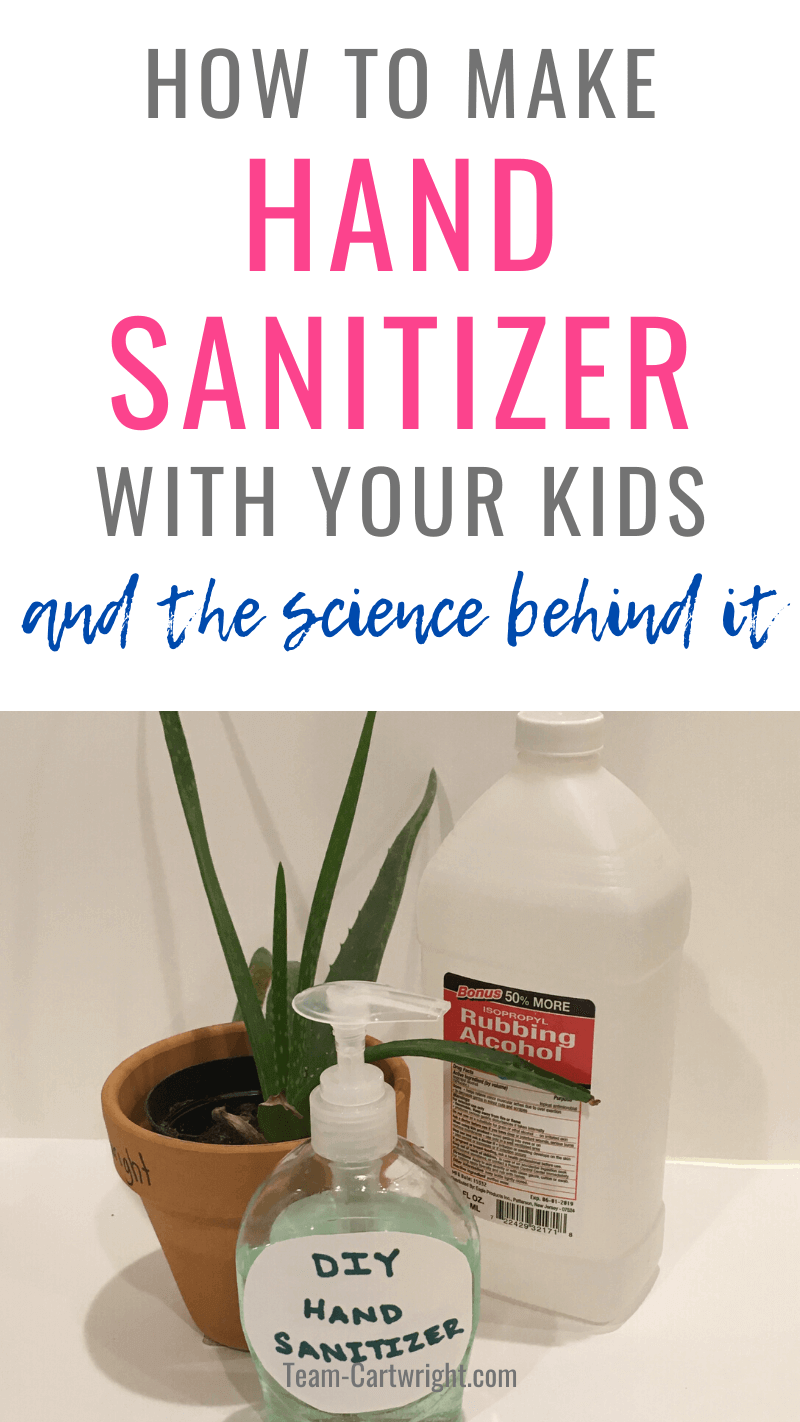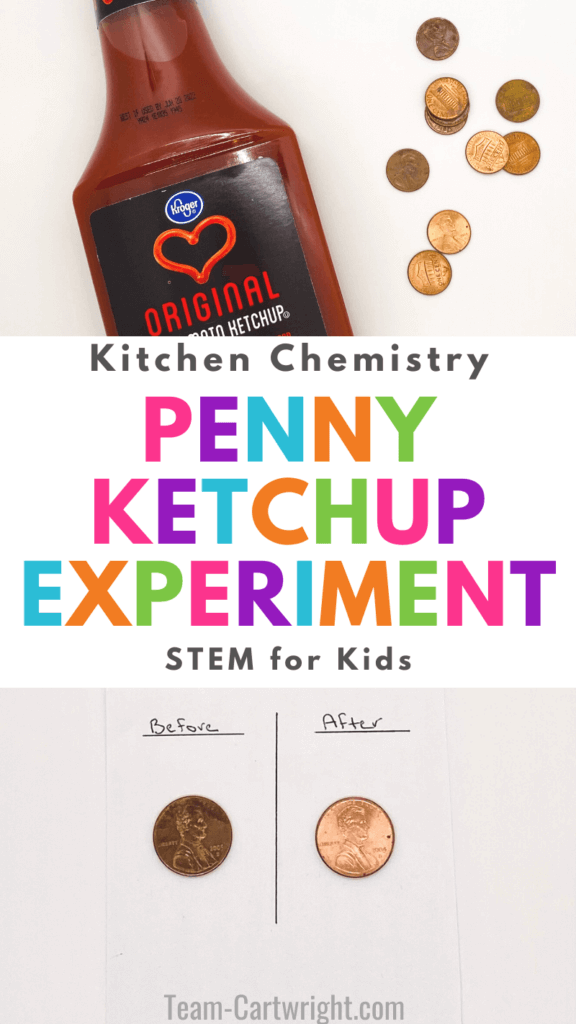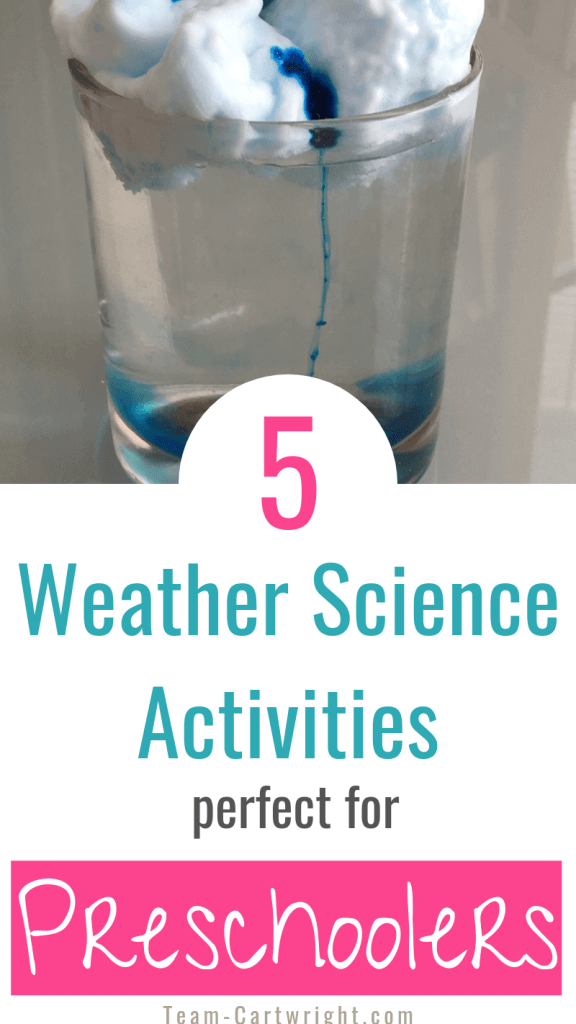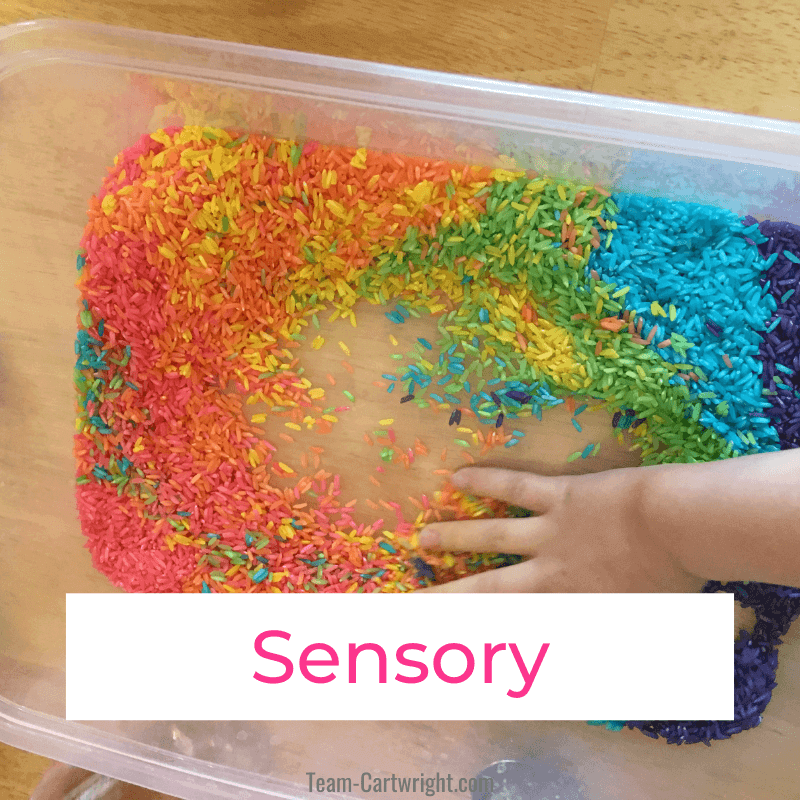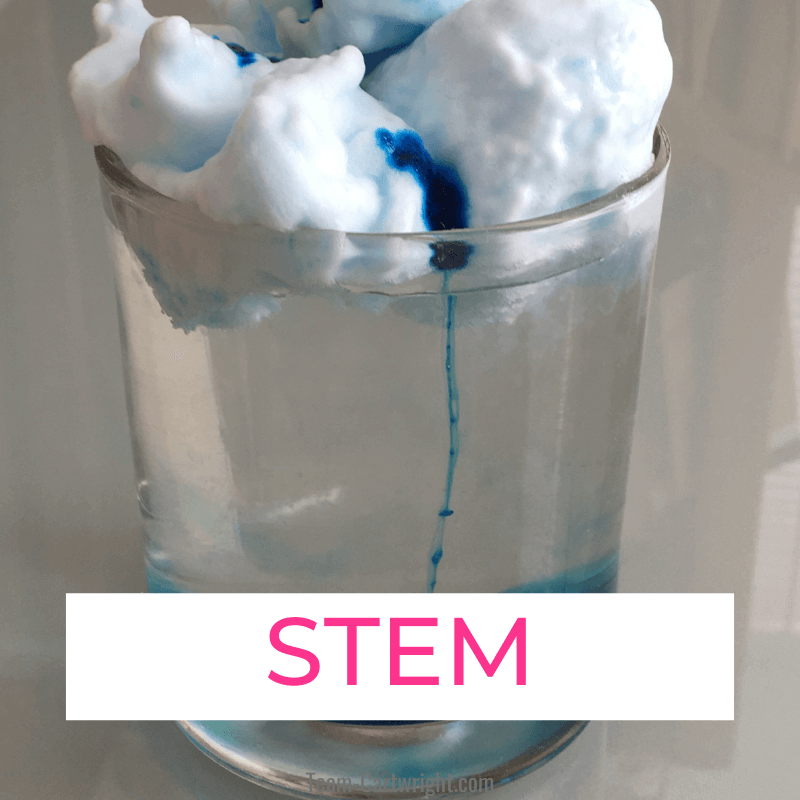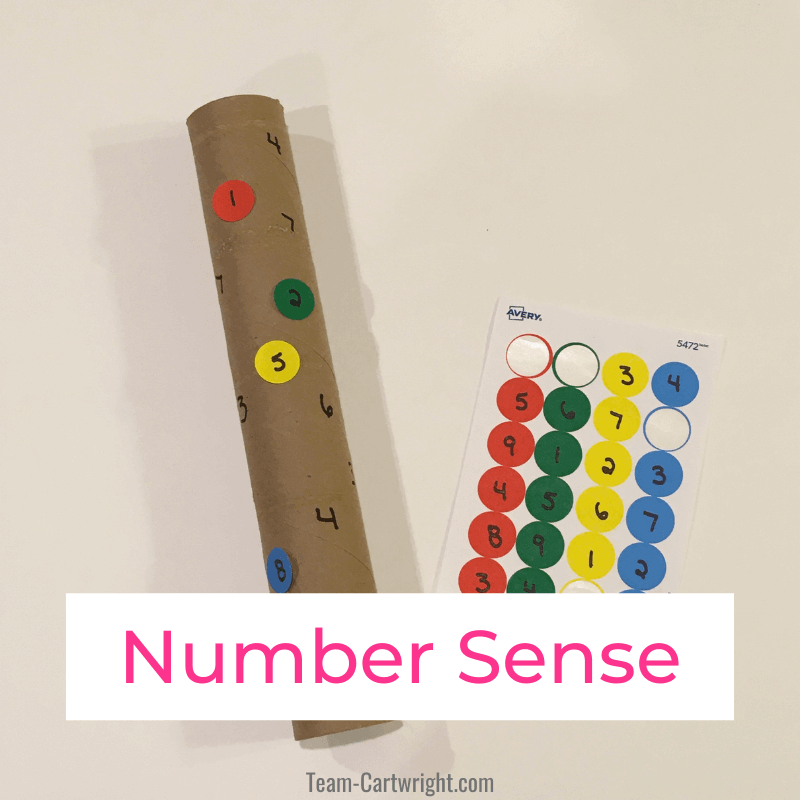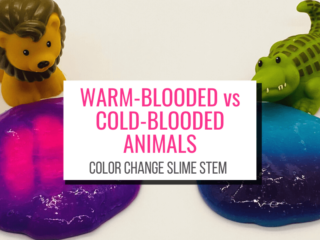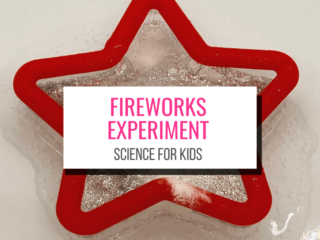Soap and pepper experiment: Science experiment that shows kids how soap works.
Do you find that your kids sometimes rush through handwashing with minimal (aka no) soap? It’s frustrating to know they aren’t getting as clean as they need to be.
The best way to help kids wash better is to teach them how soap works to make germs go away. And you can easily do that at home with a little water and pepper.
Here is how to do an easy soap and pepper experiment to show your kids the value of washing right.
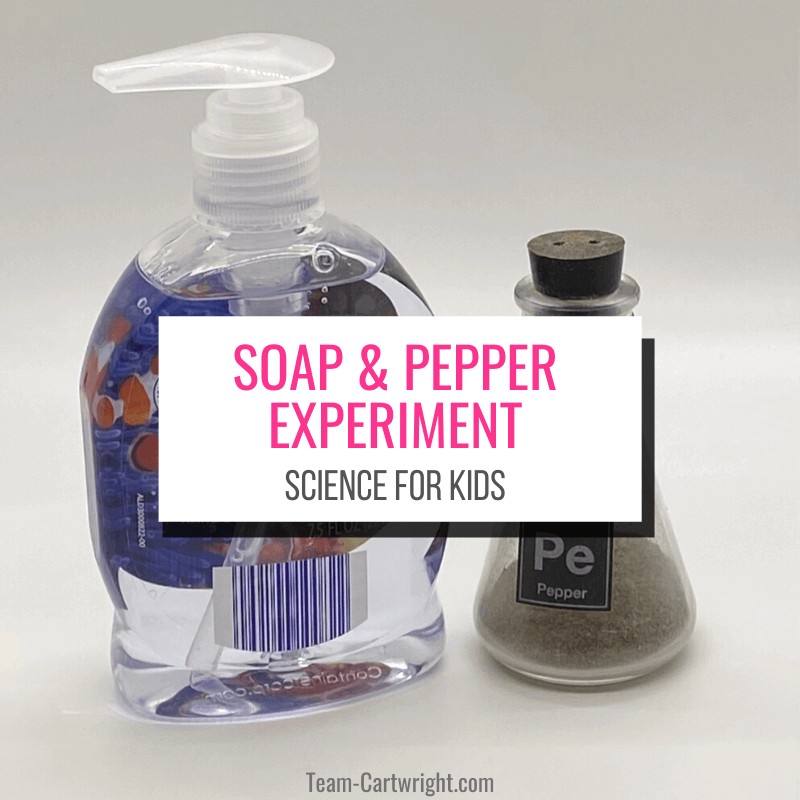
What's In This Post?
Soap and Pepper Science Experiment for Kids
This is a great science experiment for younger kids because you can get it set up so quickly. It uses at-home items you will find in your kitchen!
Supplies for Your Soap and Pepper Experiment
Head to your kitchen, you’ll find everything you need for this science experiment.
- Liquid Soap (dish soap and hand soap both work)
- Pepper
- Water
- Shallow bowl or dish to hold water
How To Perform the Pepper and Soap Experiment
I love this experiment because it is fast and easy. That’s a good thing because your kids will want to do it over and over.
Step 1: Fill a shallow bowl or baking dish with water.
Step 2: Sprinkle pepper all over the water. You want enough to be very visible on the surface of the water.
Step 3: Have your child dip their finger in soap, then touch the surface of the water. Watch the pepper run away from the soap!
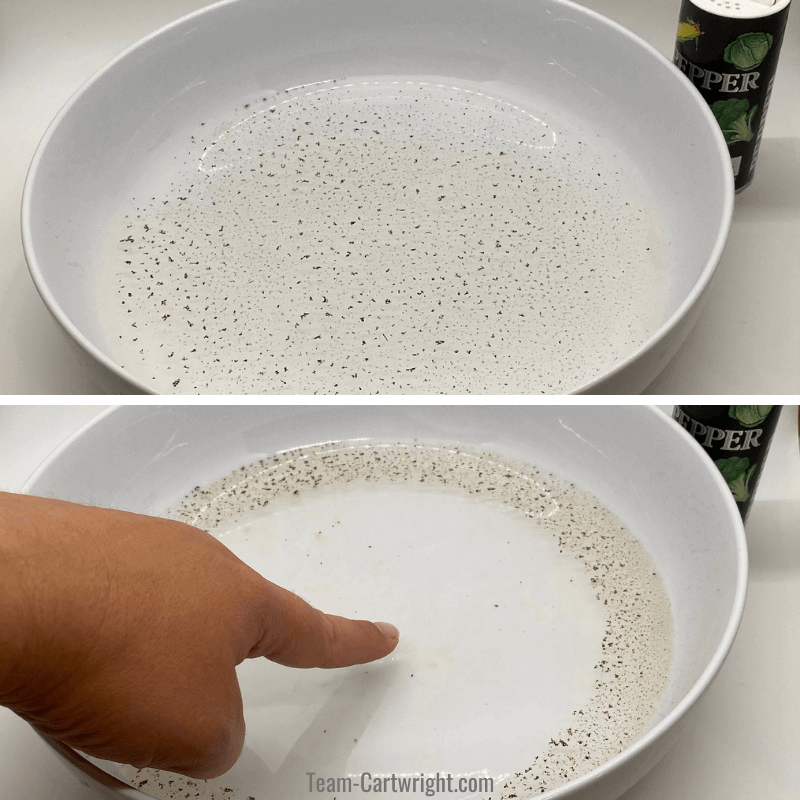
Safety
This is a pretty safe activity. Obviously, don’t let your child eat or sniff the supplies. Keep their faces out of the pepper so they don’t sneeze too much.
Tips and Clean Up
If your child doesn’t want to touch the soap you can use a cotton swab to dip into the soap and touch the water. (I like them using their fingers because I think it helps drive home using soap on our hands to get rid of germs.)
Clean up is simple. This can be rinsed down the drain.
What’s Happening Here?
This demonstration is a great way to show kids the power of soap.
Pepper represents germs. They spread out and get all over the surface of the water. And they don’t disappear.
Take the time to point out to your child that water alone does not take care of germs. So washing our hands in just water, while it might get visible dirt off, isn’t always getting everything off our hands.
But then we add the soap and the pepper runs away. The goal is to show your child that soap helps get rid of germs way better than just water.
(You can learn more about how hand sanitizer repels germs here: DIY Hand Sanitizer for Kids)
Try these awesome activities next!
The Pepper and Soap Experiment Explained
This is a super fun STEM activity that clearly shows kids how soap really makes a difference when washing. But we can explain even more. So how does the soap and pepper experiment work?
Let’s take a look at all the parts.
The Pepper
This experiment starts with the pepper on the water. Adding pepper to water is very different from adding salt to the water. Salt dissolves and disappears pretty quickly. Pepper sticks around.
This is because pepper is hydrophobic. Hydrophobic means it fears water. As a result of this pepper does not dissolve and tends to stay at the surface of the water. It does not want to be there.
The Water
Water is made up of two hydrogen atoms and one oxygen atom. It is a polar molecule. The short version of this is that water molecules have a positive charge on one side and a negative charge on the other. This means these molecules attract each other. It’s similar to a magnet.
Water, being polar, is attracted to itself and this results in surface tension. Surface tension helps small particles sit on top of the water.
The Soap
Soap is a surfactant. A surfactant is a substance that tends to reduce the surface tension of a liquid.
This reduction of surface tension helps with wetting and spreading properties. So they help with dying fabrics, for example. Another surprising use is in mayonnaise. The lectin in egg yolks acts as a surfactant that lets oil and water emulsify.
Surfactants are very helpful in soaps and detergents as well.
How the Soap and Pepper Experiment Works
Alright, we have our 3 big components here, so it’s time to put them all together.
The surface tension of the water and the hydrophobic nature of the pepper result in the pepper sitting on top of the water. The soap, acting as a surfactant, breaks that surface tension and sends the pepper flying to the edges of the dish.
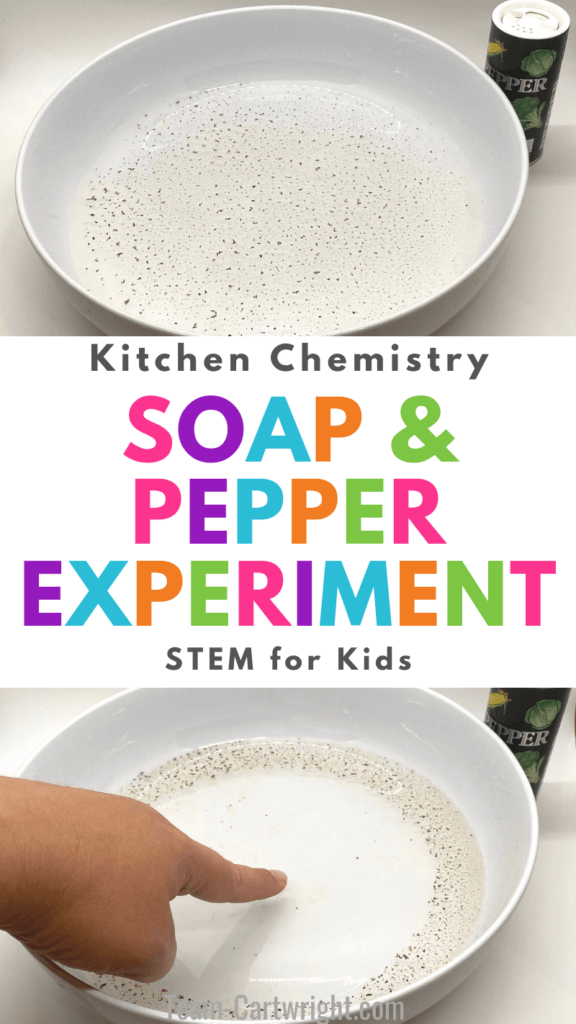
The Importance of Washing Hands with Soap
The overall theme of this experiment is that soap matters. Washing with water alone can get a lot of dirt and debris off your hands, but we need soap to break that surface tension and get the germs off.
Do you think this experiment will encourage your kids to use soap more?

Let’s find your next amazing discovery!
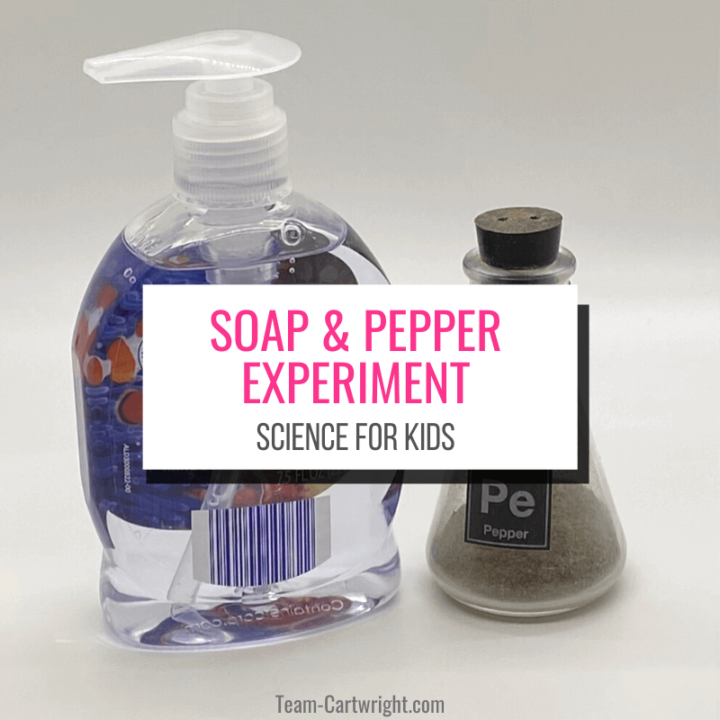
Soap and Pepper Experiment for Kids
This is an easy and fun science experiment that clearly shows the importance of soap. It's perfect for toddlers and preschool!
Materials
- Liquid Soap (Dish Soap or Hand Soap)
- Pepper
- Shallow Bowl or Dish
- Water
Instructions
- Fill your dish with water.
- Sprinkle pepper all over the surface of the water.
- Put some liquid soap on your finger and touch the surface of the water to see the pepper run away from the soap!
Notes
Safety
This is a pretty safe activity. Don't let your child sniff the pepper or eat the soap.
Clean Up
This experiment can be rinsed down the drain when complete.

